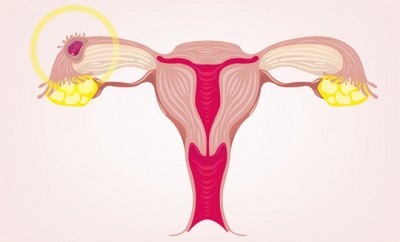Signs of Implantation Bleeding – Implantation Bleeding and Symptoms
Implantation bleeding is spotting (light bleeding), which happens before the time that a woman would normally expect her normal menstrual cycle. This type of bleeding is one of the earliest pregnancy symptoms in a 1/3 of all women, and occurs when the ovum (female egg) and sperm meet and then the fertilized egg attaches onto the wall of the uterus.
When Does Implantation Bleeding Occur?
Implantation bleeding typically occurs 5 to 12 days after conception. It happens before or near the date of menstruation, and women can expect to experience implantation bleeding anywhere between 2 and 7 days prior to menstruation date. Sometimes it may coincide with the menstruation date, which can be very confusing.
Why Does Implantation Bleeding Occur?
Fertilization happens inside the fallopian tube and then the fertilized egg travels to the uterus where it attaches itself to the uterine wall (endometrium) in order to receive nutrients and oxygen which are necessary for its growth. The inner lining of the uterus is rich with blood, and therefore some drops of blood often leak from the vagina when the egg penetrates into the uterine wall.
How Long Does Implantation Bleeding Last
Every case is different. But, generally, implantation bleeding lasts a few hours to 2 or 3 days. In some women, the bleeding can last a month or two, though this is very rare. It’s always important to consult a health care professional if theirs is abnormal bleeding or unusual signs accompanying the bleeding.
Recognizing the Signs of Implantation Bleeding
Implantation bleeding may be confused with the regular period, especially if it coincides with the date of menstruation. Nonetheless, implantation bleeding differs from the bleeding from menstruation in a number of ways, and is a pretty normal sign that you might be pregnant.
Firstly, the color and quantity of implantation bleeding is quite different from the bleeding experienced during a regular period. It is darker compared to the bleeding from a normal period and may have a brownish tinge to it as the blood is not fresh and has to travel from the uterine wall.
Secondly, the implantation bleeding is not as heavy as a period. The bleeding is usually very light and will resemble an extremely light period. Unlike menstruation, it may last only for a couple of hours or days. The normal menstrual blood has a red color and often becomes heavier within a day or two.
Thirdly, implantation bleeding is usually accompanied by lighter cramping compared to that of the period. The mild cramping happens due to the changes that occur in the uterus in order to accommodate the embryo.
Because implantation bleeding is a symptom of early pregnancy, it will be accompanied by other signs of pregnancy. So you can determine whether or not you’re experiencing implantation bleeding by checking other signs of early pregnancy, such as nausea, sore breasts, frequent urinating, mood swings and dizziness.
However, it can be tricky as many symptoms of early pregnancy, such as abdominal cramping, pain and nausea, resemble the symptoms commonly experienced before a menstruation. If the cramping or pain increases, it could be an indication of a normal period or a serious problem with the pregnancy, such as tubal pregnancy (ectopic pregnancy), or even a medical condition like a bladder infection or appendicitis. It is important to see a doctor if the bleeding does not stop after a couple of days or if any severe symptoms, such as continued pain, heavy bleeding, fever or chills, do develop.













